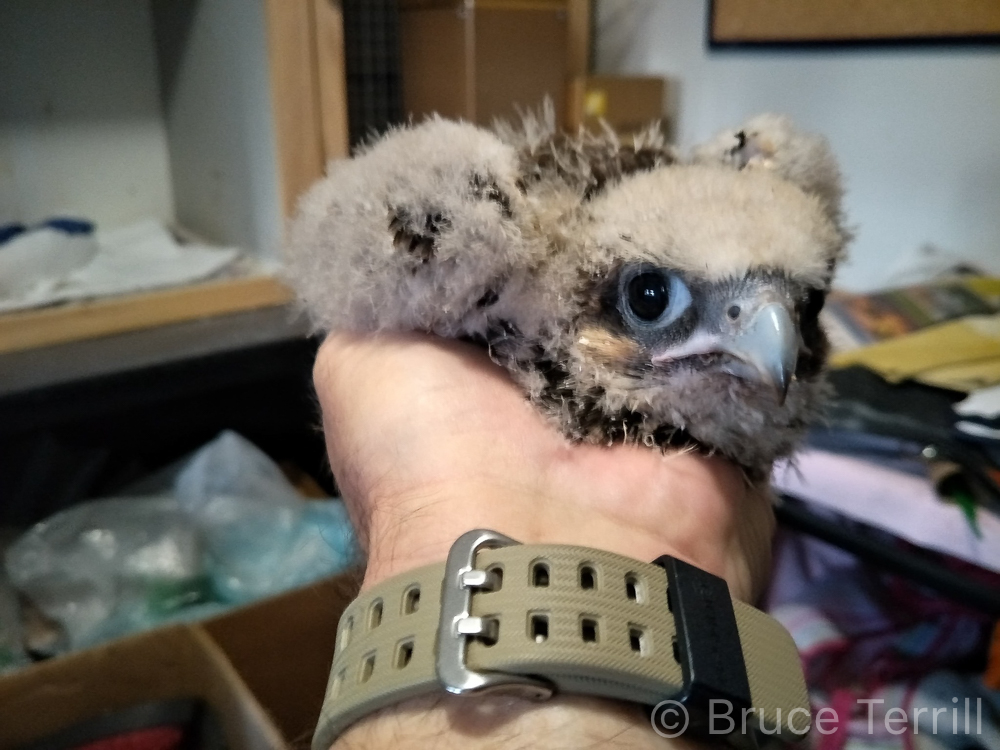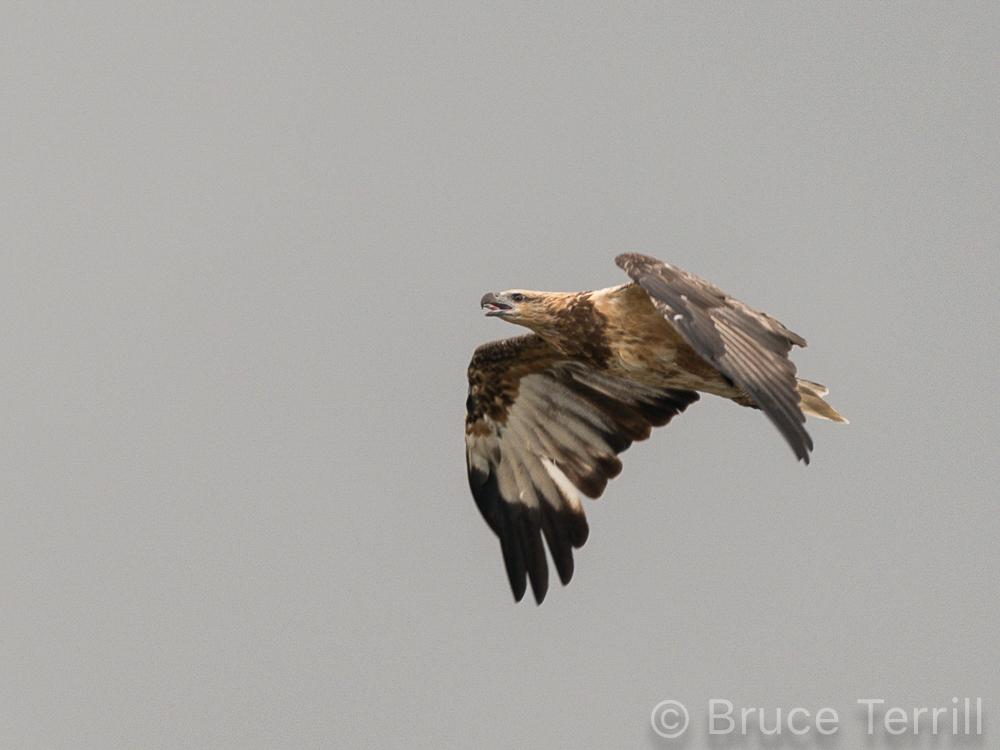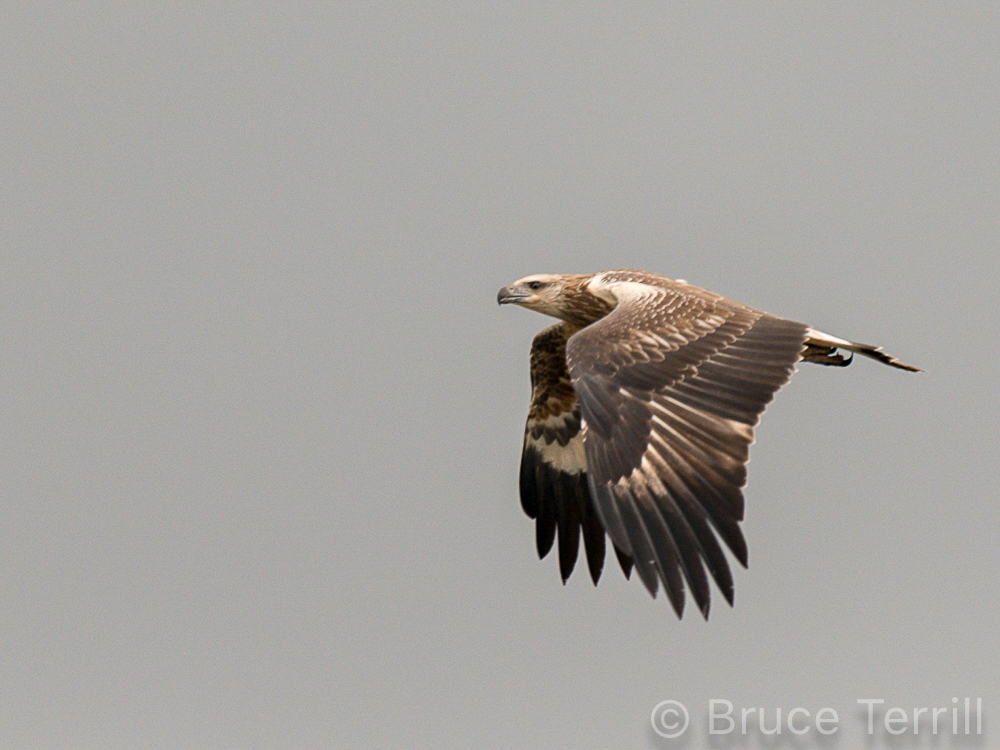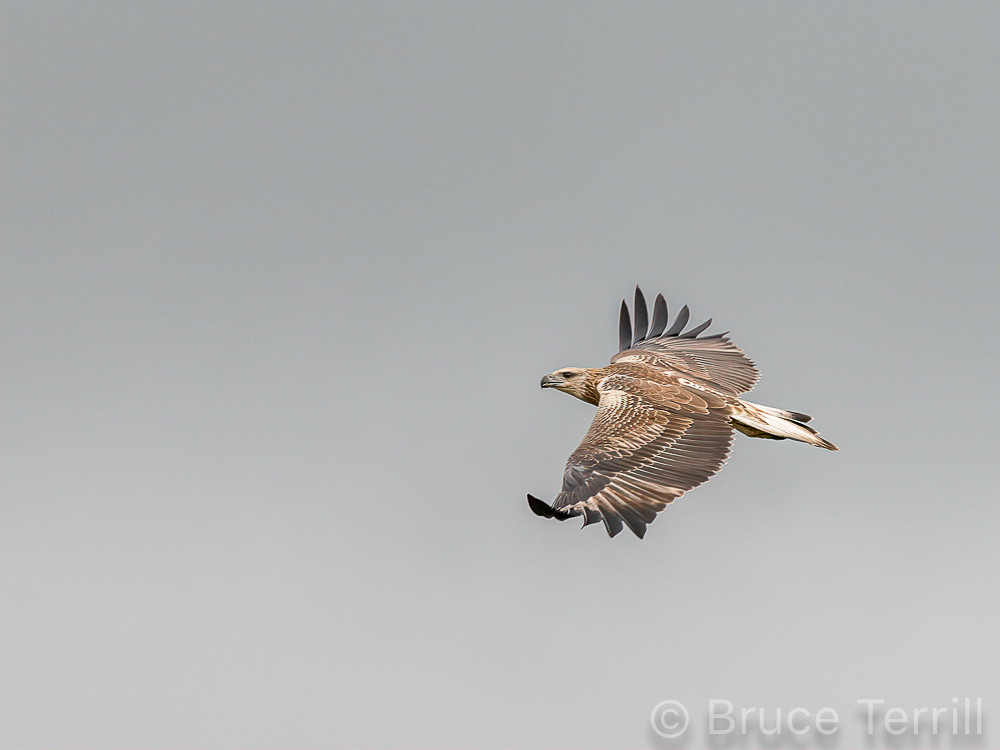This is my first guest post on lirralirra, a big welcome to Bruce Terrill who operates a wildlife shelter for raptors.

White-bellied Sea-eagle (Haliaeetus leucogaster) – nestling
Bruce cares for sick and injured raptors including looking after nestlings that have fallen from nests or been orphaned or abandoned by their parents. The nestling above looks incredible, such a tiny bundle of vulnerability and yet its magnificent potential is clear from the look in its eye and its strong bill.
Bruce wondered whether this nestling fell or tried its wings, but thinks it’s likely that its larger sibling pushed it from the nest – a clever, albeit brutal, way to get all the food brought by the parents. Bruce tried unsuccessfully, several times, to reunite the nestling with its parents, before building it a nest of its own and hanging it near the main nest. He supplemented its food until it successfully fledged – such a lucky bird.
Recently Bruce sent me a note expressing his concerns about the welfare of White-bellied Sea-eagles and the impact that birders and photographers can inadvertently have on their well-being. None of us would like to impact their well-being or breeding success so I’ll now share Bruce’s words.
 White-bellied Sea-eagle (Haliaeetus leucogaster)
White-bellied Sea-eagle (Haliaeetus leucogaster)
“Hey Guys, my name is Bruce and I operate a Rehabilitation Shelter for Raptors. It has recently been brought to my attention that there are a few photographers putting the Raptors in and around the Werribee Treatment Plant (WTP) under unnecessary pressure due to their actions while attempting to photograph these wonderful birds.
Firstly, everybody should be aware that due to the poor weather conditions over the last few years, there has been very few successful breeding sites and finally this year is looking as though it might buck the trend and be good for breeding. That’s the good news, but we as observers and photographers must put the birds’ welfare ahead of any pursuit for a picture. What some birders might be failing to understand is that while they are sitting on or pursuing a Raptor, it is not and will not, go about it’s normal activities. Photographers will never get a natural pic of a bird while chasing it or just sitting there watching it. Please understand that any energy used up by the bird, while it is being harassed, must be accounted for by another hunting session. That may seem fine, as far as you’re concerned you have a picture of a Raptor in hunting mode, but what you might be failing to understand is that the birds’ normal behaviour has now been interrupted which may have included finding its new mate, or in the worst case scenario, stopped it from delivering food to its young?
We are all probably guilty of spending a bit too much time watching a bird, but my comments are directed mainly at the few serial offenders who sit off a bird, or it’s nest, for half an hour and in some cases up to two hours as recently reported to me of one individual sitting adjacent to a well known WBSE’s roost. It’s now up to all of us to have a little think about how we approach the birds and any impact that our activities are having on them. Sadly it will be the decent folk who read this and adjust their activities accordingly, the serial offenders might need a little gentle reminder if you see them during such activities. I love looking after the sick and injured, I hate it when I get little balls of fluff from an abandoned nest. Bruce.”
 White-bellied Sea-eagle (Haliaeetus leucogaster)
White-bellied Sea-eagle (Haliaeetus leucogaster)
I hadn’t realised that White-bellied Sea-eagles have been experiencing low breeding success and I hope Bruce is right about this year being good for breeding. I was lucky to see the Western Treatment Plant pair a few week’s ago, they are a magnificent species.

White-bellied Sea-eagle (Haliaeetus leucogaster)
Bruce is in the Ballarat area and is happy to be contacted if you have a raptor in need of assistance; his number is 0401 413 794.
Happy birding
Kim
NB I have finally created a Kim Wormald – lirralirra facebook page, my regular lirralirra posts will continue here as usual – many thanks to everyone who has clicked ‘like’ on the new page, you make me happy
~ Thank you for visiting and commenting
~ If you would like a weekly email letting you know that lirralirra has been updated please use the ‘subscribe’ box above right

my goodness coincidence! i was just raving in anger yesterday about the poor eagles who must feel like they are being stalked by these photographers! one guy has new pictures to load every single day! it must get to be quite addictive but what is it doing to the birds all for a few facebook likes??
It’s so upsetting isn’t it Sally. I’ve seen and heard of all kinds of activities that disturb birds, and sadly they’re often the very shots that get a lot of facebook likes. With more understanding I’m hopeful that fewer people will take or like such photographs. Thank you for caring
What an absolutely gorgeous ball of fluff! Very sage advice from Bruce. A big thank you to him for his work. I have huge admiration and respect for wildlife rescuers and carers.
I agree with you Alyssa, totally!
That baby is sweetness! Good on you Bruce for looking after them.
Fierce sweetness! Heaps of thanks to Bruce for all his work.
Excellent point – and one that can be forgotten or overlooked. Thank you.
Thank you D, Kim
Thank you Bruce. Building a substitute nest near to its family was an innovative and thankfully successful brainwave. You, and all the rehabbers, are definitely some of my heroes.
And many thanks to you for stunning photos of this majestic marvel.
Your comment about the nest has made me think I should talk to other wildlife carers I know and see if they’d share information about all kinds of fascinating subjects, like feather imping.
Thanks so much for this post on how to better interact with the WBSE. And such beautiful images!!
Thanks Ruth, I agree about Bruce’s images